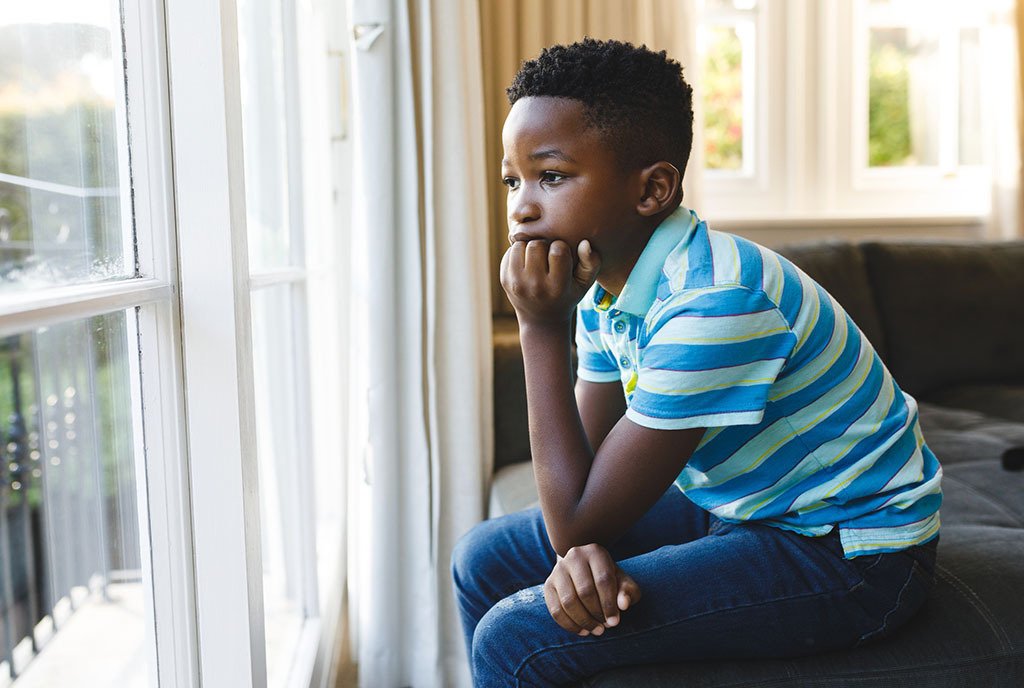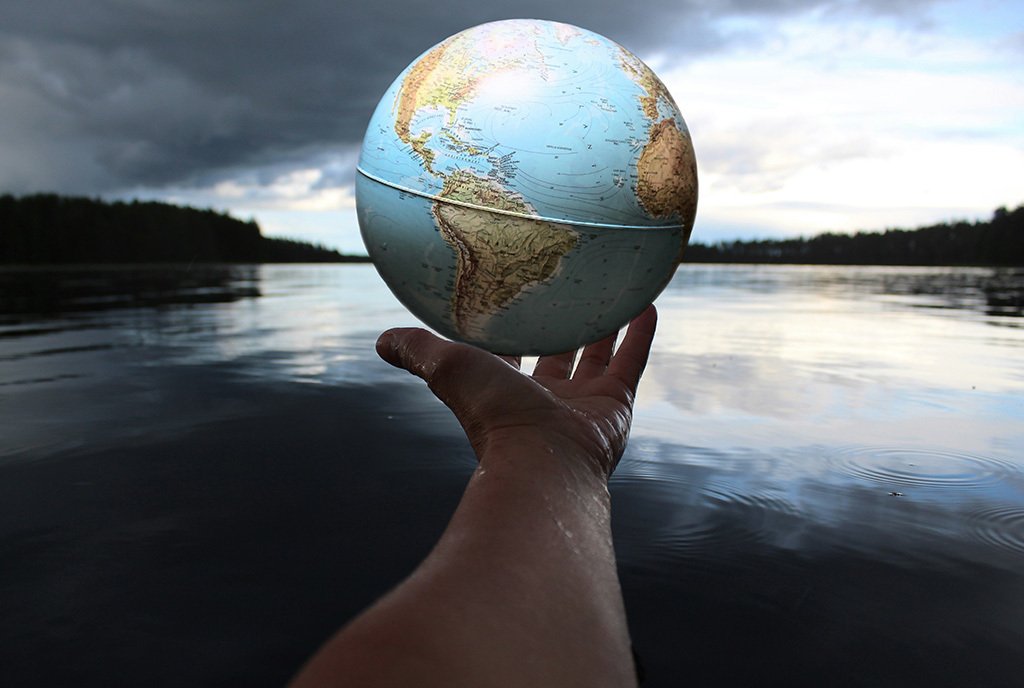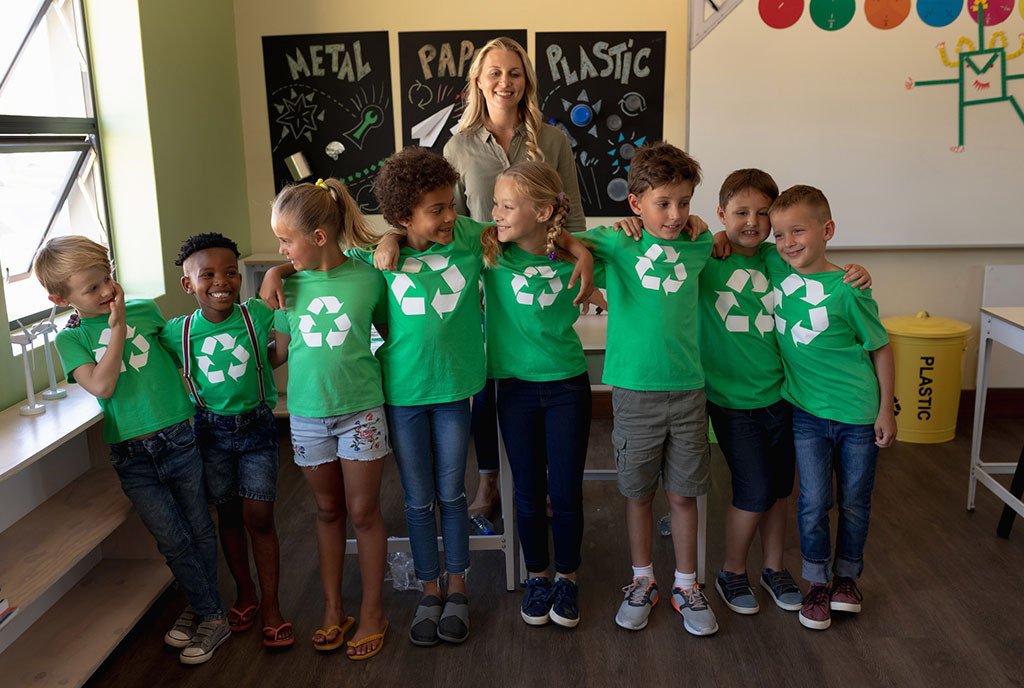
If you’ve noticed fewer children running about your local playground, heard fewer shouts of joy coming from fields or woods, it’s not just the allure of phones, social media, or video games keeping kids inside. It’s not even remote schooling. More and more, it’s the climate.
Escalating air pollution, heat waves, severe storms, and wildfires make the outdoors increasingly unpleasant and unsafe, especially for the youngest and most vulnerable. Climate change is ruining play for children. How essential is play—specifically, playing outside—for children’s development, and what can be done to preserve and protect this sacred aspect of childhood?
Staying Inside for Safety
First Street is a climate analytics firm based in New York. According to new peer-reviewed research from the firm, within about 20 years, airborne soot and ozone—a highly reactive gas that can be harmful to people’s health—will increase to 2004 levels, a time before a US federal campaign to clean the air. In other words, we’re going back decades. As the Hill writes, “Falling air quality has driven up the number of days when children in Western states can’t safely play outside nearly fivefold since 2000.”
Poor quality air, worsened by the smoke of wildfires, is only one aspect of the destructive weather patterns keeping families inside. Extreme cold in the winter months can make even snowball fights or snowman-building risky. Sudden floods can turn streams, lakes, and rivers dangerous. In the record-breaking heat now commonly experienced around the globe, metal playground equipment turns blistering, sunburn intensifies as cloud coverage decreases, increasing exposure to UV rays, and high heat puts children at risk of heat stroke or fainting.
The ability to go outside and play is an issue of both health and economic justice.
Medically vulnerable children with conditions like asthma—which the National Institutes of Health refers to as “a global epidemic” due to the high rates seen worldwide—face even more risks with drastic, climate change-induced temperatures worsening many medical issues. And so, inside the children stay.
The Outdoors as a Human Right
That’s a problem, according to research such as the UNICEF report The Necessity of Urban Green Space for Children’s Optimal Development. The report links increased academic achievement with children being able to look outside their school or home windows and see greenery, and connects a walk outdoors with improved concentration. Playing outside, or even being close to the outdoors, helps people feel better, and that includes children.
“Both greener views and surroundings as well as time spent within green spaces offer children numerous mental, physical and social developmental benefits and spur their growth into ecologically aware and responsible citizens,” according to the report. “Moreover, when equally accessible, green spaces serve to reduce the health inequities suffered by socio-economically disadvantaged children.”
The ability to go outside and play is an issue of both health and economic justice. As UNICEF writes, “Children’s access to safe green spaces contributes to the fulfillment of their rights.” Trees improve air quality, whether planted in an urban park or on the vast lawn of a suburban home. Being outdoors reduces stress hormones and lowers blood pressure in people of all ages. In fact, living close to a green space has been linked to a reduction in healthcare costs.
“The health of our planet and communities and the economy of the future depend on humans having a personal, direct and life-long relationship with nature and the outdoors.”
That outside access is especially important when it comes to the health of children in cities. Globally, children growing up in cities are now slightly shorter than their rural peers, according to studies, which suggests that an urban upbringing may no longer be as safe or healthy for children due to a gap in resources.
Sign up for our free newsletters
Subscribe to NPQ's newsletters to have our top stories delivered directly to your inbox.
By signing up, you agree to our privacy policy and terms of use, and to receive messages from NPQ and our partners.
NPQ has reported on how deaths from climate change are actually deaths from poverty. Families living in poverty are less likely to have access to air conditioning, heat, weather-appropriate clothes, hot food, and clean water. The same is true of access to the outdoors. In many cities, apartments with green spaces or overlooking parks are more expensive. Public parks are for all in the United States, but being close to them often comes with a hefty price tag. That price may only increase as climate change makes the outdoors even more precious.
The Emotional Benefits of Being Outside
For children, the benefits of playing outside are even more wide-ranging than for adults. The outdoors help children grow socially and emotionally. The Washington Post writes that “social interactions and imaginative problem-solving” are improved by kids being outside, “as well as neighborhood cohesion and parental stress levels.” Being out of a house or apartment helps children learn to navigate the larger world, exposing them to their communities and neighborhoods and helping them gain independence as they grow.
What else are kids losing as they lose the outdoors?
Most outdoor play is unstructured. Children make up games—and invent and explain the rules of those games to others, sharpening their decision-making skills and social skills. Meeting other kids on the playground or in the park helps them learn and practice all the issues that come with new, impromptu friendships: dealing with disagreements, working together, and sharing (or not). By playing in an outdoor space, children learn the importance of that space for others, too.
Now more than ever, our planet needs kids to care about it.
The Outdoor Alliance for Kids (OAK) is a nationwide, strategic partnership of over a hundred organizations devoted to improving outdoor equity and access for children. As their website states, “The wellness of current and future generations, the health of our planet and communities and the economy of the future depend on humans having a personal, direct and life-long relationship with nature and the outdoors.”
That relationship is more difficult to foster now, with climate extremes driving families indoors. OAK has created a policy platform with recommendations for the Biden administration to prioritize the outdoors for children. As part of their advocacy, OAK partnered with REI to collect and distribute hundreds of postcards to lawmakers from children asking for more outside access. One program that OAK supports is Every Kid Outdoors, a federal program that gives fourth graders—and their families—free access to hundreds of national parks, waterways, and lands.
But that free entry is only for a year, and families must know about it to sign up for it. As climate extremes shorten the days people can safely go outside—and perhaps make even those days more haphazard—children have an increased need for casual outdoor access: for green spaces close to their homes that don’t require a long drive or a special ticket to reach.
As the Washington Post writes, “The implicit messages our children receive about our relationship with nature influence their mental models of how the world works and what to value.” Children learn about nature through exposure to it. And now more than ever, our planet needs kids to care about it.











